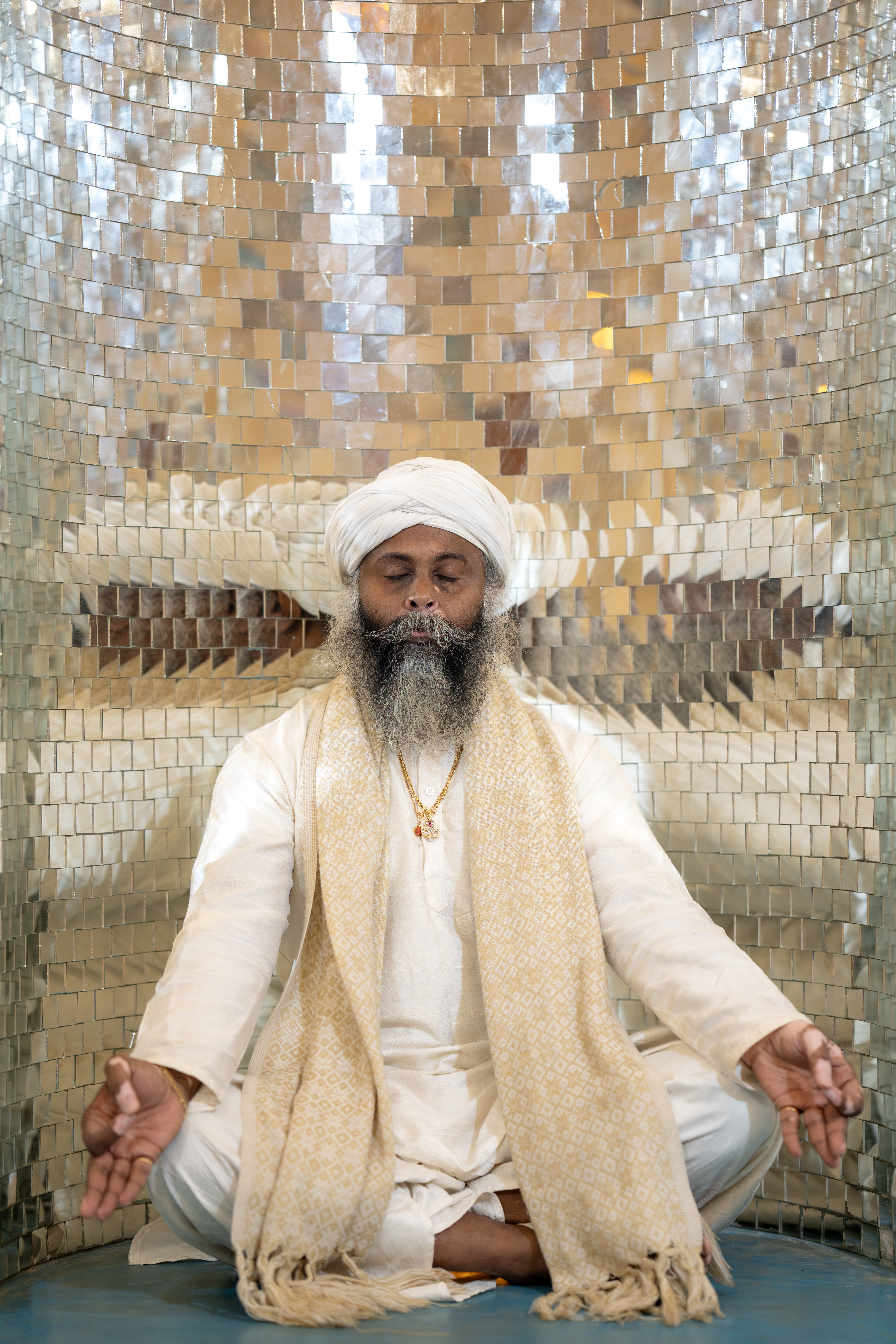In Vedanta, the journey to complete Awakening and Realization unfolds through a profound three-step process: Shravana (hearing), Manana (contemplation), and Nididhyasana (abidance). Each stage is a gateway to deeper understanding, guiding seekers from intellectual comprehension to experiential wisdom, and ultimately to abiding in Truth.
Let us explore these three sacred steps in detail and understand their transformative power.
Shravana: Hearing the Truth
Shravana, the first step, means hearing the Truth. But not all hearing is the same. There are two kinds of hearing:
- Worldly Hearing: This involves the ears, mind, and intellect. It is limited, impermanent, and serves to navigate our daily lives.
- Divine Hearing: This engages the Heart and the core of our Being. It transcends the mundane and operates at a higher frequency, connecting us to the immutable Truth, or Akshara.
The Guru is the instrument of Divine hearing. The Guru-shisya relationship is unparalleled in its purity and intimacy because it is rooted in Truth. The Guru speaks from the right side of the Heart—a space of wisdom and realization. As seekers, our task is to listen authentically, allowing the Guru’s words to penetrate deeply, sowing seeds of transformation.
Authentic Hearing
Authenticity in hearing requires openness, accountability, and a willingness to endure the challenges of Truth. The mind and ego often resist, but steadfast seekers embrace the guidance of the Guru, recognizing that the path to everlasting joy demands discipline and surrender.
From a yogic perspective, Shravana achieves Pratyahara—the turning of the life force inward toward the Self.
Manana: Contemplating the Truth
Hearing the Truth is not enough. The second step, Manana, involves deep reflection and contemplation. It requires revisiting the Guru’s teachings, pondering their meaning, and applying them in daily life.
This stage is about discerning the real from the unreal. Like a swan separating milk from water, the seeker must develop the ability to extract Truth while rejecting falsehood. Repeated hearing and contemplation strengthen this discernment.
The Role of Vasanas
Vasanas (deep-seated tendencies and attachments) often arise during this process. They can divert attention from the Divine goal, leading to distraction and suffering. However, rather than running away from worldly objects, seekers are encouraged to engage with them mindfully, absorbing only what is necessary while remaining anchored in the Self.
Manana demands discipline and focus. The tug of war between the left (emotional) and right (wise) sides of the Heart challenges the seeker to remain aligned with their Divine purpose.
From a yogic perspective, Manana achieves Dharana—sustained focus on the Truth.
Nididhyasana: Living the Truth
The culmination of Shravana and Manana is Nididhyasana, where the seeker begins to live and breathe the Truth. It is effortless, spontaneous, and natural. Here, one operates from the full power of the Self, experiencing the totality of Being.
Effortless Abidance
In this stage, agitation, conflicts, and restlessness subside. The seeker abides in unwavering peace, moving seamlessly between the human and Divine dimensions. Concepts dissolve, and direct experience of the Self arises.
This is the realm of Dhyana (meditation) and Samadhi (unwavering abidance). It is a state of profound freedom, where the mind no longer poses problems, and vasanas no longer bind the seeker.
The Role of Guru and Self-Power
The Guru’s Grace is indispensable in this journey, but it is only 50% of the equation. The seeker’s own effort, authenticity, and willingness to receive and activate their inner power are equally crucial.
A true Guru empowers rather than imposes, activating the higher centers within the seeker. However, the seeker must cultivate their capacity to receive and explore this inner Shakti (spiritual energy).
Practical Takeaways: The 1-3-5 Rule to Self-Shaktipat
This simple yet profound rule enhances the seeker’s ability to listen, contemplate, and abide in Truth:
- One Purpose: Always remember your Divine goal—realizing the Self.
- Three Pillars: Practice Shravana, Manana, and Nididhyasana consistently.
- Five Practices: Develop discipline, devotion, discernment, focus, and surrender.
Conclusion
The 3-fold process of Shravana, Manana, and Nididhyasana offers a complete roadmap to spiritual Awakening. It is a journey from hearing to contemplation to living the Truth—a journey that transforms the seeker into the Self.
While the path may be challenging, it is also profoundly rewarding. With the Guru’s Grace and one’s own steadfast effort, the ocean of vasanas can be crossed, and the shores of Liberation can be reached.
Let us walk this sacred path with courage, authenticity, and unwavering commitment, always remembering that the Truth is not something to be attained—it is who we already are.

